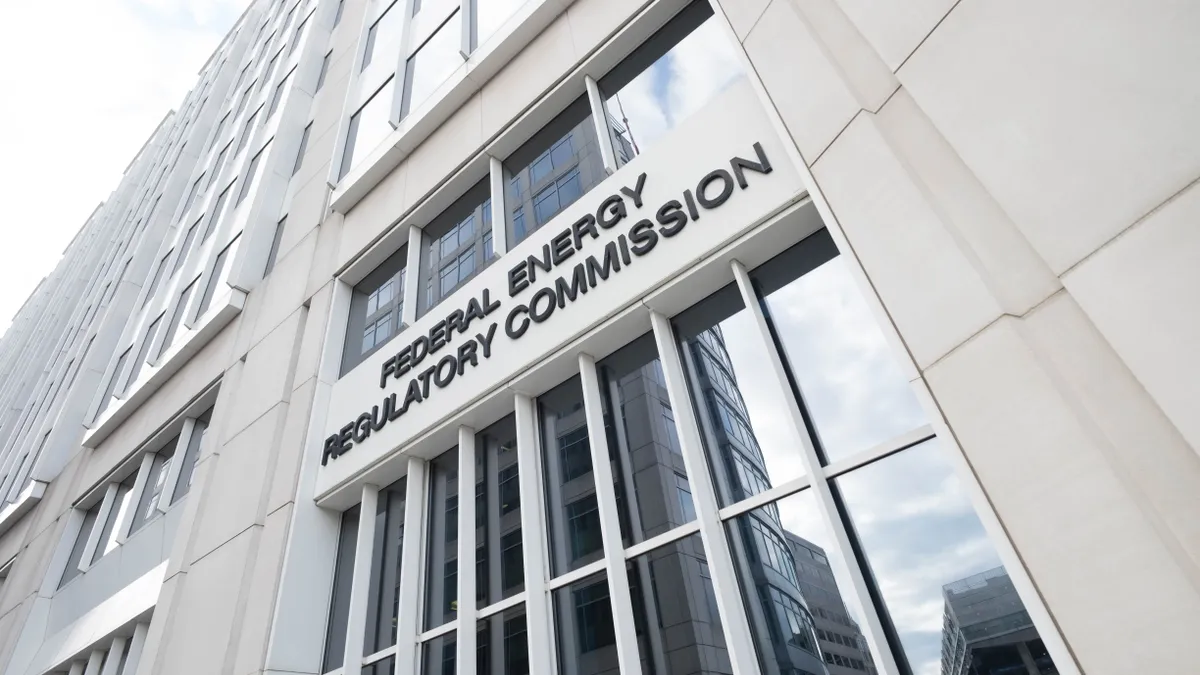Dive Brief:
- The nation's regional grid operators filed initial comments at the Federal Energy Regulatory Commission on Friday detailing efforts to enhance the resilience of the bulk power system.
- Comments from the PJM Interconnection stood apart from other filings by asking FERC to direct operators to update market compensation for power plants to reflect resilience attributes. The request comes amid concerns in the sector that PJM's resilience filing and ongoing price reforms could amount to low-profile bailouts for plants targeted by a Department of Energy subsidy proposal rejected by FERC in January.
- Other grid operator comments focused on defining resilience, enhancing transmission planning, boosting cyber protections and improving fuel security. The chairman of FERC this week indicated that devising compensation mechanisms for resilience will likely be a particularly challenging element of the proceeding.
Dive Insight:
Rejected by FERC at the beginning of January, the DOE's Notice of Proposed Rulemaking (NOPR) would have provided cost recovery to merchant coal and nuclear plants on the grounds that they are essential to system resilience — broadly, the grid's availability to "bounce back" from outages.
FERC threw out that argument on Jan. 8, but acknowledged that the concept of grid resilience is important and that some generators may not be compensated properly today for those attributes. The agency asked grid operators to file comments within 60 days with strategies to identify, define and value those aspects of resilience.
The operators responded with detailed filings on March 9, largely telling FERC they can handle resilience issues within their own stakeholder processes. But PJM, the nation's largest electricity market, stood apart with its request for FERC to direct compensation changes for generators.
Among a litany of recommendations, PJM asked FERC to direct it and other grid operators to file "any proposed market reforms and related compensation mechanisms to address resilience concerns" between nine and 12 months after FERC issues a final order in the resilience docket. FERC regulators have indicated they want to expedite evaluation of the docket, potentially issuing final directives to grid operators within a year.
Additionally, PJM asked FERC to permit "non-market operations" during emergencies, including "provisions for cost-based compensation" when markets fail or plants are directed to take emergency actions. That authority does not exist under current PJM rules.
In its filing, PJM indicated that it has already begun identifying potential reforms to plant compensation, including changes to its operating reserves market, black start requirements, energy market price formation and integration of distributed energy resources. Giving the grid operator a deadline, PJM wrote, would "help ensure focus on these issues in the stakeholder process."
Those recommendations are likely to attract scrutiny in the power sector. Even before the filings, many sector observers voiced concerns that PJM's resilience plans, combined with ongoing efforts to reform plant compensation, could amount to a "stealth NOPR" — a backdoor bailout of coal and nuclear plants.
While PJM's plans to reform plant compensation predate the DOE NOPR, the grid operator's Friday filing links them to the resilience docket, asking FERC to use an expedited docket to speed up evaluation of the reforms.
"In a sense, it seems as if PJM is trying to move pricing reforms, which include energy price formation, shortage pricing, and black start pricing, for example, into the resilience docket," Robbie Orvis, policy director at Energy Innovation, said in an email. "This puts the cart before the horse; FERC and the RTOs have yet to fully define resilience and identify elements worth compensating, which should both take place before any market modification or new product is developed."
The DOE NOPR proposed cost recovery for all merchant plants with 90 days of onsite fuel supply that operate in jurisdictions that feature capacity markets — largely limiting its impact to PJM and ISO-New England. ISO-NE, however, did not push for changes to plant compensation. Instead, it focused on ways to enhance fuel security, the subject of an extensive report published by the grid operator in January.
That report echoed longstanding concerns in New England that the region may eventually not have enough pipeline capacity to serve heating and generator demand during the winter months. But those conclusions are controversial as well, with environmentalists arguing gas transport concerns are overblown and can be solved with non-fossil fuel technologies.
Other grid operator filings from the Midwest ISO, California ISO, New York ISO, Southwest Power Pool and Electric Reliability Council of Texas hit on a number of similar themes, including the need to beef up interregional transmission and power coordination, improve operators with local distribution utilities and cybersecurity protocols. No operator reported pressing reliability or resilience threats to their systems.
Market participants will now have 30 days to respond to the filings, after which FERC can make a decision in the proceeding or order further action and evaluation. At a conference in Houston this week, FERC Chair Kevin McIntyre said the issues raised by PJM are likely to be the most challenging for the commission.
“The compensation side is tricky and critical," McIntyre said, according to Axios. "If there are power plants — big, small or otherwise — that are making valid, resilience-focused contributions to our grid, essentially helping to keep the lights on in a way that shores up resilience, but are not being compensated for those attributes that they are providing to the grid, that is automatically of concern to FERC."














